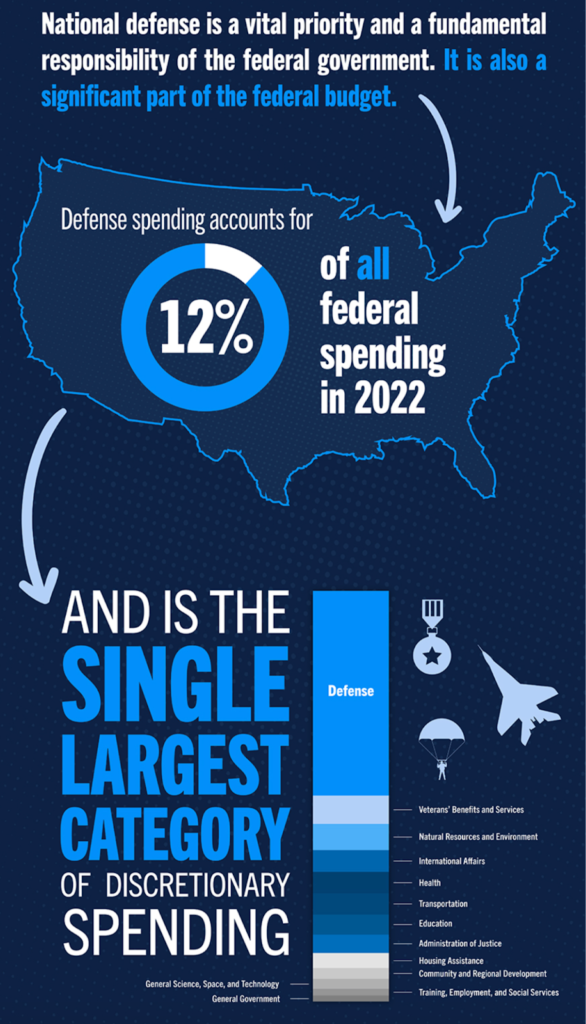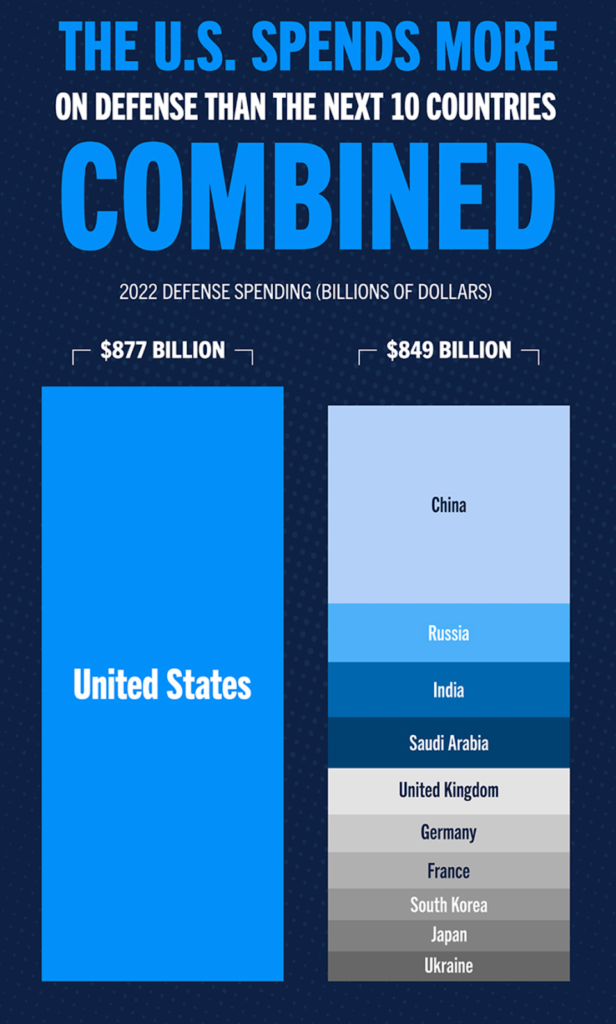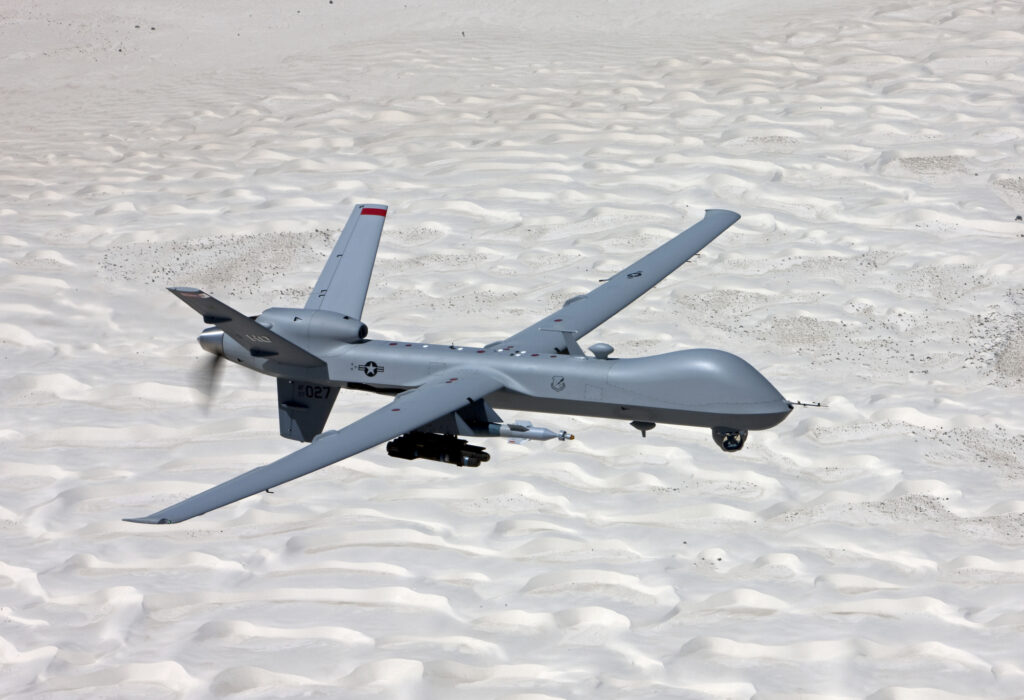There’s big money to be made in the defense of America.
“In all, at least a mind-boggling $21 trillion of Pentagon financial transactions between 1998 and 2015 could not be traced, documented or explained.”
Or this more recent example, when the Department of Defense (DoD) “found” an extra $3 billion to send arms to Ukraine.
But as taxpayers, we hope most of that $877 billion allocated this year to the DoD via the federal discretionary budget goes to, well, defending Americans.
Fingers crossed.
The Lion’s Share of the Budget
There’s been no shortage of reporting on just how much the DoD receives each year to both keep America’s worst accountants on its payroll and simultaneously defend our nation. But as a refresher, it’s a metric f***ton.

In fact, The U.S. spends more than the next 10 countries combined to fund its defenses.

Policing the world is expensive. But the consequences of letting our guard down — literally — and allowing other world powers with autocratic leaders hellbent on our destruction to rule supreme simply isn’t an option.
The federal government is also heavily criticized because of its ongoing, decades-long neglect of our veterans. The very men and women who risk life and limb to preserve our way of life are virtually forgotten when they return home:
- They’re offered subpar medical care.
- They’re over- or inaccurately prescribed medications rather than having their mental health properly assessed.
- And their suicide rates outpace the general populace at 1.5x higher for men and 2.5x higher for women.
The Department of Veterans Affairs is criminally underfunded, particularly when juxtaposed with how much the government allocates for its military. In 2022, just $113 billion was earmarked for veterans’ benefits.
Perhaps the VA could solicit more funding if it was better represented by the lobbyists cycling in and out of departments that better lend themselves to profiteering.
The Revolving Door & the Military-Industrial Complex
The government has a lobbyist problem. We’re all taught in elementary civics that a bill is proposed, discussed in committees, voted on, then sent to the executive branch to be signed or vetoed.
Disillusioned as we are, by adulthood, we realize that’s not how it works. The government is teeming with middlemen who all want to broker deals between their former employers (government) and their new ones (special interest groups). Or vice versa.
And because of this, backdoor deals are commonplace, typically to the benefit of few.
Take, for example, Shay Assad, now retired after four decades of negotiating weapons deals between the private sector and the government. In the 1990s, he was executive VP and chief contract negotiator for defense giant Raytheon (RTX). He then became the DoD’s most senior contract negotiator.
It’s something President Eisenhower warned us about as early as 1961, when in the lame-duck days of his presidency, he told America in a televised speech:
“This conjunction of an immense military establishment and a large arms industry is new in the American experience. Yet we must not fail to comprehend its grave implications. In the councils of government, we must guard against the acquisition of unwarranted influence, whether sought or unsought, by the military-industrial complex. The potential for the disastrous rise of misplaced power exists and will persist.”
Ignoring Ike’s advice has had disastrous results. Fast-forward to 2023, and nearly half of America’s defense budget goes to military contractors.
To add insult to injury, the Pentagon has become the victim of price gouging schemes. Last month, 60 Minutes reported that the DoD has fallen victim to military contractor price gouging. According to the report:
“In the competitive environment before [defense] companies consolidated, a shoulder-fired Stinger missile cost $25,000 in 1991. With Raytheon, Assad’s former employer, now the sole supplier, it costs more than $400,000 to replace each missile sent to Ukraine. Even accounting for inflation and some improvements, that’s a seven-fold increase.”
It’s not just missiles, either. It trickles all the way down to spare parts, with a federal review team finding:
“The government will pay TransDigm $119 million for parts that should cost $28 million.”
It sucks. We know. Especially when chairman of TransDigm, W. Nicholas Howley, has a net worth of $866 million and there are an estimated 38,000 homeless veterans in the U.S.
However unlikely it is to reverse the very thing President Eisenhower warned us about in January 1961, there are ways to at least position yourself to profit from a now-institutionalized system of government spending.
TL;DR
America’s defense spending exceeds that of the next 10 nations combined. Much of that has to do with the revolving door between military contractors and the federal government. In next week’s issue of The Big Idea, we’ll explain how you can position yourself to potentially profit from unencumbered defense spending.

